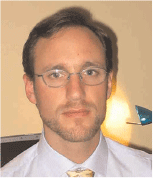Evaluating the gas potential of Cooper Basin Permian lacustrine mudrocks: a comparison with North American marine shale gas reservoir
J. Peyaud A , M. Vallee B , J. Benson B and D. Taylor BA Baker Hughes.
B Santos.
The APPEA Journal 52(2) 663-663 https://doi.org/10.1071/AJ11077
Published: 2012
Abstract
The methods to evaluate the potential of marine shale as gas producers have been refined during the past five years with the development of new logging tools and increased experience gained from activity in the US. While most shale plays in the US were deposited in a marine environment, in Australia, however, extensive shales were deposited in continental basins. The question is: are continental and marine shales similar enough for the same methodology to be applied—if not, how should it be adapted or changed?
The type of organic matter, its abundance and the type of hydrocarbons it can generate may differ significantly between continental shale and marine shale. Long-range lateral continuity can be expected from marine deposits as water bodies are commonly wide and deposition processes are well known. Conversely, in continental environments water body sizes are more variable and usually smaller.
In a marine environment, the formations containing organic matter are relatively easy to identify because accommodation depends on global events (eustatic variations, global tectonic events). In continental formations it is more difficult, as accommodation is strongly dependent on regional tectonics. In this extended abstract, a case from the Woodford shale (US) is compared to a case from the Cooper Basin (Australia). Differences in mineralogy, type, abundance and maturity of the organic matter are analysed and their impact on the log response is discussed. Finally, recommendations are made to adapt the methodology to continental shales.

In 2003, Jean-Baptiste Peyaud obtained his PhD (geology and geochemistry) about the diagenesis in a thick shale formation. Since then, he has worked in the service industry and as a researcher. In 2005, he joined the University of Liverpool to work on the diagenesis of a deeply buried reservoir and the impact of macro-organisms on the mineralogy of fresh sediments. In 2008, he joined CSIRO as petrographer and joined Baker Huges in 2009 as mineralogist in charge of spectroscopic mineralogy interpretations. He is interested in the quantification and prediction of diagenesis. |

Melissa Vallee joined Santos’ petrophysics team in January 2007 after a short career at Schlumberger and Total SA as a geologist and junior petrophysicist. Before joining the oil industry, she worked as a professor at her Alma Mater in Venezuela, teaching physics and mechanical engineering. She obtained a geological engineering degree from the Universidad de Oriente (UDO) in 2004 and an MSc (petroleum geosciences) from the University of Adelaide in 2010. She is presently working on a variety of projects about the petrophysical evaluation of shales in fluvial-lacustrine environments. |

Jim Benson is a geologist with the unconventional reservoirs group at Santos. He graduated with a BSc (hons) (applied geology) from UNSW in 1977 and worked as a biostratigrapher with Soekor in South Africa for 13 years before joining Santos in 1992. During the past 20 years, he has worked as a palynologist and exploration stratigrapher. He is presently involved with the characterisation of potential deep coal and shale gas reservoirs in the Cooper Basin. |

Dave Taylor is team leader of the unconventional reservoirs group at Santos. He has more than 20 years of experience as a geoscientist working primarily in a number of Australian onshore and offshore producing basins, in addition to significant experience in the Middle East. He gained first-hand experience with unconventional reservoirs appraising and developing one of Australia’s first CSG fields—the Scotia field—more than 10 years ago. He received a BSs (geology) from Macquarie University in 1988. Member: AAPG, EAGE. |
References
Aoudia, K., Miskimins, J.L., Harris, N.B., and Minch, C.A., 2010—Statistical analysis of the effect of mineralogy on rock mechanical properties of the Woodford shale and the associated impacts for hydraulic fracture treatment design. Proceedings of the 44th US Rock Mechanics Symposium and 5th Canadian Rock Mechanics Symposium, Salt Lake City, USA, 27–30 June, ARMA 10-303.Jacobi, D., Gladkikh, M., Lecompte, B., Hursan, G., Mendez, F., Longo, J., Ong, S., Bratovich, M., Patton, G., and Shoemaker, P., 2008—Integrated petrophysical evaluation of shale gas reservoirs. Proceedings of the CIPC/SPE Gas Technology Symposium 2008 Joint Conference, Calgary, Canada, 16–19 June, SPE 114925.
Passey, Q. R., Creaney, S., Julla, J. B., Moretti, F. J., and Stroud, J. D. (1990). A practical model for organic richness from porosity and resistivity logs. AAPG Bulletin 74, 1,777–94.


